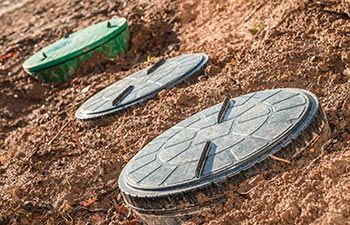
If you are planning a septic tank installation on your property, there are several factors to consider if you want your system to operate at maximum efficiency. One such factor is the condition and type of soil that will surround your new septic system. While your septic tank and pipes get all the recognition when it comes to processing your wastewater, your soil plays a strong role too. When wastewater leaves your septic tank, it is filtered and treated even further by the soil in your drain field. If your soil is not equipped for the job, it can disrupt the function of your entire septic system.
Your Soil Needs These Qualities For Septic Success
If your septic tank could talk, it would demand these qualities from your soil:
- #1 Not Too Dense
- The soil in and around the drain field must be able to disperse fluid or effluent in an efficient manner. If the soil is too dense, this dispersion doesn’t occur and drainage issues can eventually develop.
- #2 Not Too Loose
- On the contrary, if your soil is too loose, the effluent from the tank will pass through too easily and too quickly, which means that the wastewater is not properly treated and contamination can occur.
- #3 Not Dull or Grey
- Why does the color of your soil matter? In most cases, a greyish or dull tone to your soil indicates poor drainage abilities. Therefore, you’ll want your soil color to be as bright as possible.
- #4 Maintains Structure
- It is important for your soil to have structure. A ped is a combination of particles that come together with similar types of soil. This fosters proper movement of water and dispersion of effluent underground.
Get an Expert to Examine Your Soil
At Metro Septic, we proudly handle septic tank installations with the highest level of expertise. Before we install your tank, however, we consider important factors such as your soil’s condition. To ensure your soil is ready for a successful septic system, call our experts today at Metro Septic.

